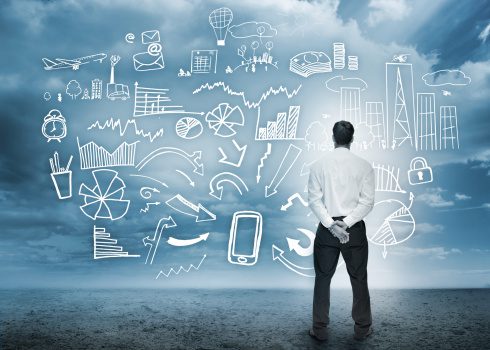What don’t we know about the Internet of Things? A lot more than we actually do know, that’s for sure. Technologists have been putting forth definitions for years now, yet the term is still widely misunderstood. Sure we can read the definitions from Wikipedia and other vendors and research firms, but these descriptions merely articulate the physical reality, not the implication. To really gain a sense for the Internet of Things, we must look beyond the whizbang sparkle of connected objects, and consider what we can’t see and touch.
Tangible is believeable… but only the beginning
When people think of IoT– or even just the idea of connecting an object to the Internet– they think of those objects (the ‘things). Yet this is like looking at the history of trade and seeing only piles of rice, salt, and tobacco. Admittedly, connected ‘things’– be they people, objects, animals, places, or environments– are fascinating, perhaps distractingly so in these early days. Connected tennis rackets, eggtrays, rubber duckies, oh my; wearables galore; mobile devices, beacons, 3-D printers, connected transportation, even a fitness tracker for your dog– ‘hardware’ is exploding in all directions, across just about every industry. But, this is only the first step.
Connectivity is actually way sexier than the components that comprise it
Networks and nodes, hubs and spokes, things and Internet. The Internet part of the Internet of Things enjoys a fraction of the limelight compared to the things. This is in part because it is comprised of a myriad of complex and unprecedented technologies each with various roles in powering, connecting, securing, and managing connectivity and the data inherently associated with it.
- Communicators (sensors, actuators, applications)
- Connectors (gateways, routers, network and hardware infrastructure)
- Cloud (platforms for development, automation, storage, APIs, app marketplaces, etc.)
- Data (databases, analytics, protocols, standards, data centers)
These technologies are unfamiliar (even confusing) to most people– way less accessible to comprehend than is a connected coffee maker. Yet, this is where we can ascertain the more profound (and yes, actually sexier) implications of IoT. Consider this scenario to compare things vs. Internet:
Using a wearable fitness tracker to monitor your exercise is one ‘thing’. Now enter connectivity: In the event of an injury, a biometric sensor data in the tracker can connect to a post-surgical recovery plan, communicate healing progress back to the surgeon in real time, show how the patient’s progress compares to other (anonymous) patients’, suggest more effective ways to expedite healing and mobility and avoid increases in long-term medical insurance premiums. Here, the interplay between data, things, and the Internet forges connections and fosters visibility and empowerment unprecedented in human history. And this is but one rather niche example.
Peer through an evolutionary lens for a deeper understanding
An even deeper understanding of the Internet of Things takes the kaleidoscopic reality of [so many] things and connections and places it in context. How does IoT fit into the grander scheme of technology, of business, of humans’ relationships with both? These questions transcend any one blog post, but we can begin by looking at how connecting data streams to physical objects introduces a new phase in the evolution of communication and our ability to access information.
Pre-digital technology and media relied on a broadcast model– where brands set the agenda with one-way (one-to-many) communications. The Internet, Social Media, and Mobile have fostered an era of dialog– wherein two-way communications can occur between both brand and consumer, and among consumer and consumer.
What the Internet of Things offers is an entirely new paradigm of ‘multi-way’ communications where, by adding sensors to the world around us (e.g. beings, objects, places, environments), we grant these items a voice and context simply by existing.
No matter how narrow of a scope we take (e.g. looking at the impact of this on clothing retailers for instance,) or how much we zoom out (e.g. considering how this changes our conception of the Internet itself), understanding what IoT signifies in broadest sense opens the door for applying it in any direction. Whether across industries, business functions, products and services; or to ourselves, those we care about, those institutions with which we interact, or civilization at large, this fundamental shift in communication capabilities is far greater than the sum of its parts– things or Internet.
Connecting the dots
So what do we do with this? True understanding is accounting for that which we don’t, or even can’t know. There are many unknowns in IoT today, indeed many challenges that will shape how this trend continues to unfold (or doesn’t). IoT opens a window to more visibility (via data) than ever, allowing us to connect the dots between each other in new ways. As such, it offers businesses and consumers alike tremendous value, but also risk and consequence that can’t be fully imagined. Whether executive, developer, marketer, consumer, patient, or civilian, we must see past the dots, even pan out from the connections between them, and consider how we can harness this technology to reacquaint us with the world around us– a world more fascinating and precious than any connected object could ever be.
This post was originally posted on Altimeter Group’s blog and can be found here.


